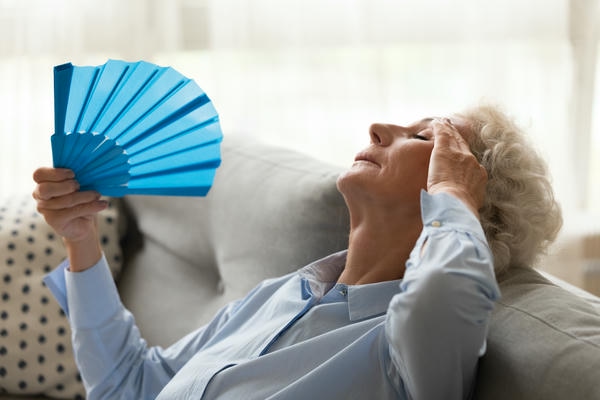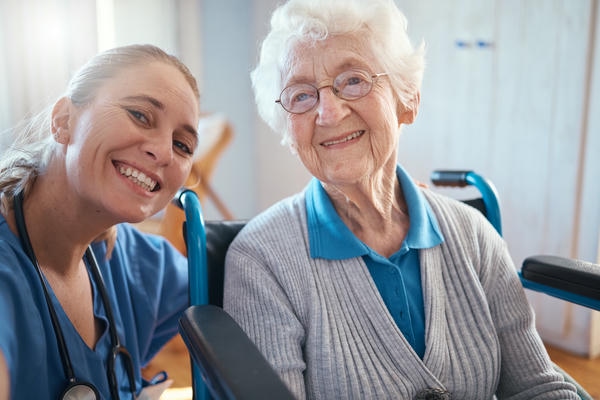As the summer sun rises high in the sky, casting its warm glow upon the earth, it’s easy to get caught up in the excitement of the season. Picnics in the park, leisurely strolls through blooming gardens, and the joy of basking in the sunshine beckon us outdoors. However, for seniors, the summer months bring not only the promise of enjoyable activities but also the need for vigilance and care when it comes to managing the effects of heat and humidity on their health.
The Story of Grandma Lily
Grandma Lily, a vibrant 78-year-old, has always been the heart of her family. With her infectious laughter and warm hugs, she brings joy to every gathering. But as the summer temperatures soar, her family notices a change in her demeanor. Grandma Lily seems more fatigued, dizzy, and prone to confusion during the hottest parts of the day.
Concerned for her well-being, Grandma Lily’s family begins to research the unique challenges that seniors face during the summer months. They learn that older adults are particularly vulnerable to heat-related illnesses due to physiological changes, chronic medical conditions, and the side effects of certain medications. Armed with this knowledge, they set out to create a safe and comfortable environment for Grandma Lily, ensuring that she can enjoy the summer season without compromising her health.
Understanding the Risks of Heat and Humidity
As we age, our bodies undergo a series of changes that make us more susceptible to the effects of heat and humidity. One of the primary reasons for this increased vulnerability is the decrease in our ability to sweat effectively. Sweating is the body’s natural cooling mechanism, allowing us to regulate our internal temperature. However, as we grow older, our sweat glands become less efficient, making it harder for our bodies to cool down during hot weather.
Moreover, many seniors live with chronic medical conditions such as heart disease, diabetes, and respiratory disorders. These conditions can exacerbate the impact of heat on the body, making it even more challenging to maintain a healthy temperature. Certain medications, such as diuretics and beta-blockers, can also impair the body’s ability to respond to heat, further increasing the risk of heat-related illnesses.
Staying Cool: Practical Tips for Seniors
- Prioritize Hydration One of the most crucial aspects of staying cool during the summer months is maintaining proper hydration. As the temperatures rise, our bodies lose moisture more rapidly through sweating, making it essential to replenish fluids regularly. Encourage seniors to drink water throughout the day, even if they don’t feel particularly thirsty. Dehydration can occur quickly and can manifest in symptoms such as dry mouth, fatigue, dizziness, and decreased urine output. To make hydration more appealing, consider offering a variety of beverages such as herbal teas, fruit-infused water, or low-sugar electrolyte drinks. Keep a pitcher of cool water easily accessible and remind seniors to take sips frequently. If mobility is a concern, consider providing a water bottle that can be carried around the house or worn on a lanyard for convenience.
- Dress for Comfort The clothing we wear plays a significant role in regulating our body temperature. During the summer months, it’s essential for seniors to dress in lightweight, loose-fitting, and breathable fabrics. Natural materials like cotton and linen allow for better air circulation, helping the skin to stay cool and dry. Light-colored clothing is also preferable, as it reflects heat rather than absorbing it. When venturing outdoors, encourage seniors to wear wide-brimmed hats and sunglasses to protect their face and eyes from the sun’s harmful rays. Applying a broad-spectrum sunscreen with an SPF of at least 30 is also crucial to prevent sunburn and reduce the risk of skin damage.
- Create a Cool Indoor Environment While spending time outdoors can be enjoyable, it’s essential to have a cool and comfortable indoor space to retreat to during the hottest parts of the day. Air conditioning is the most effective way to maintain a pleasant temperature indoors. If central air conditioning is not available, consider investing in a portable air conditioning unit or window-mounted unit for the main living areas. Fans can also be a valuable tool in keeping the indoor environment cool. Place fans in strategic locations to improve air circulation, such as near windows or doorways. Ceiling fans can help distribute cool air more evenly throughout a room. Additionally, using exhaust fans in kitchens and bathrooms can help reduce indoor humidity levels, making the space feel more comfortable.
- Plan Activities Wisely During the summer months, it’s crucial to be mindful of the timing and intensity of activities. Encourage seniors to schedule outdoor tasks and leisurely pursuits for the early morning or late evening hours when temperatures are more tolerable. Avoid strenuous activities during the peak heat of the day, typically between 10 a.m. and 4 p.m. If outdoor activities are necessary during the hotter hours, ensure that seniors take frequent breaks in shaded or air-conditioned areas. Provide plenty of cool water and encourage them to rest if they feel fatigued or dizzy. Indoor activities such as reading, solving puzzles, or engaging in favorite hobbies can be enjoyable alternatives during the hottest parts of the day.
- Utilize Cooling Techniques In addition to relying on air conditioning and fans, there are several other cooling techniques that can provide relief from the heat. Taking a cool shower or bath can help lower body temperature and refresh the skin. If a full shower is not feasible, using a damp cloth to wipe down the face, neck, and arms can be equally effective. Another simple yet powerful tool is a spray bottle filled with cool water. Misting the skin periodically can create a cooling sensation and provide instant relief. Keep a spray bottle easily accessible, and encourage seniors to use it throughout the day, especially when spending time outdoors or in areas without air conditioning.
Recognizing Heat-Related Illnesses
Despite taking precautions, heat-related illnesses can still occur, particularly in seniors who are more vulnerable to the effects of heat and humidity. It’s crucial for caregivers and loved ones to be aware of the signs and symptoms of heat exhaustion and heat stroke, as prompt intervention can prevent serious complications.
Heat Exhaustion
Heat exhaustion is a condition that occurs when the body overheats and becomes dehydrated. Symptoms of heat exhaustion include:
- Heavy sweating
- Weakness or fatigue
- Dizziness or lightheadedness
- Headache
- Nausea or vomiting
- Muscle cramps
- Cool, clammy skin
If you suspect that a senior is experiencing heat exhaustion, it’s essential to act quickly. Move them to a cooler location, preferably an air-conditioned room or a shaded area. Encourage them to lie down and elevate their feet slightly to promote blood flow to the heart. Offer cool water to drink and apply cool, damp cloths to the skin to help lower body temperature. If symptoms persist or worsen, seek medical attention promptly.
Heat Stroke
Heat stroke is a more severe and potentially life-threatening condition that occurs when the body’s temperature regulation system fails, and the internal temperature rises to dangerous levels. Signs and symptoms of heat stroke include:
- High body temperature (above 103°F)
- Hot, red, dry, or damp skin
- Rapid, strong pulse
- Confusion or disorientation
- Dizziness
- Nausea
- Headache
- Losing consciousness
If you suspect that a senior is experiencing heat stroke, it’s crucial to call 911 immediately. While waiting for medical help to arrive, move the person to a cooler environment and remove any excess clothing. Apply cool, wet cloths to the skin or immerse them in cool water if possible. Do not give them anything to drink, as it may interfere with medical treatment.
Creating a Comfortable and Safe Summer Environment
In addition to the practical tips for staying cool, there are several steps that caregivers and loved ones can take to create a comfortable and safe summer environment for seniors.
- Optimize Air Circulation Ensuring proper air circulation is essential for maintaining a cool and comfortable indoor environment. Open windows during the cooler parts of the day, such as early morning or late evening, to allow fresh air to circulate. Use fans strategically to help distribute cool air throughout the living space. Consider installing ceiling fans in frequently used rooms to improve overall air movement.
- Block Out the Sun Direct sunlight can significantly increase indoor temperatures, making it challenging to maintain a cool environment. Use curtains, blinds, or shades to block out the sun’s rays during the hottest parts of the day. Light-colored or reflective window coverings can be particularly effective in reflecting heat and keeping the indoor temperature lower.
- Create Cool Zones Designate specific areas within the home as cool zones, where seniors can retreat during the hottest parts of the day. Choose a room that is naturally cooler or has better air conditioning coverage. Equip the cool zone with comfortable seating, a fan, and easy access to cool water and refreshments. Encourage seniors to spend time in this designated area when the heat becomes too intense.
- Maintain Cooling Appliances Regular maintenance of cooling appliances is crucial to ensure they function efficiently when needed most. Schedule annual maintenance checks for air conditioning units to identify and address any potential issues before the summer season begins. Clean or replace air filters regularly to maintain optimal airflow and cooling capacity. If using fans, ensure they are dust-free and in good working condition.
- Provide Access to Cooling Resources In situations where air conditioning is not available or inadequate, provide seniors with alternative cooling resources. Portable fans, ice packs, and damp cloths can offer temporary relief from the heat. Consider setting up a cool mist humidifier to help lower the indoor temperature and add moisture to the air, which can be particularly beneficial for seniors with respiratory concerns.
Conclusion
As the summer sun brings warmth and vitality to the world, it’s essential to remember the unique challenges that heat and humidity pose for seniors. By understanding the risks, implementing practical cooling strategies, and remaining vigilant for signs of heat-related illnesses, caregivers and loved ones can help seniors enjoy the summer season safely and comfortably.
Grandma Lily’s story serves as a reminder of the importance of proactive care during the summer months. By creating a cool and comfortable environment, encouraging hydration, and engaging in mindful activities, her family ensures that she can continue to radiate her love and laughter without compromising her well-being.
Let us embrace the summer season with joy and caution, taking the necessary steps to protect the health and happiness of the seniors in our lives. With knowledge, compassion, and a commitment to their well-being, we can create a summer filled with cherished memories and the warmth of love that transcends even the hottest of days.





